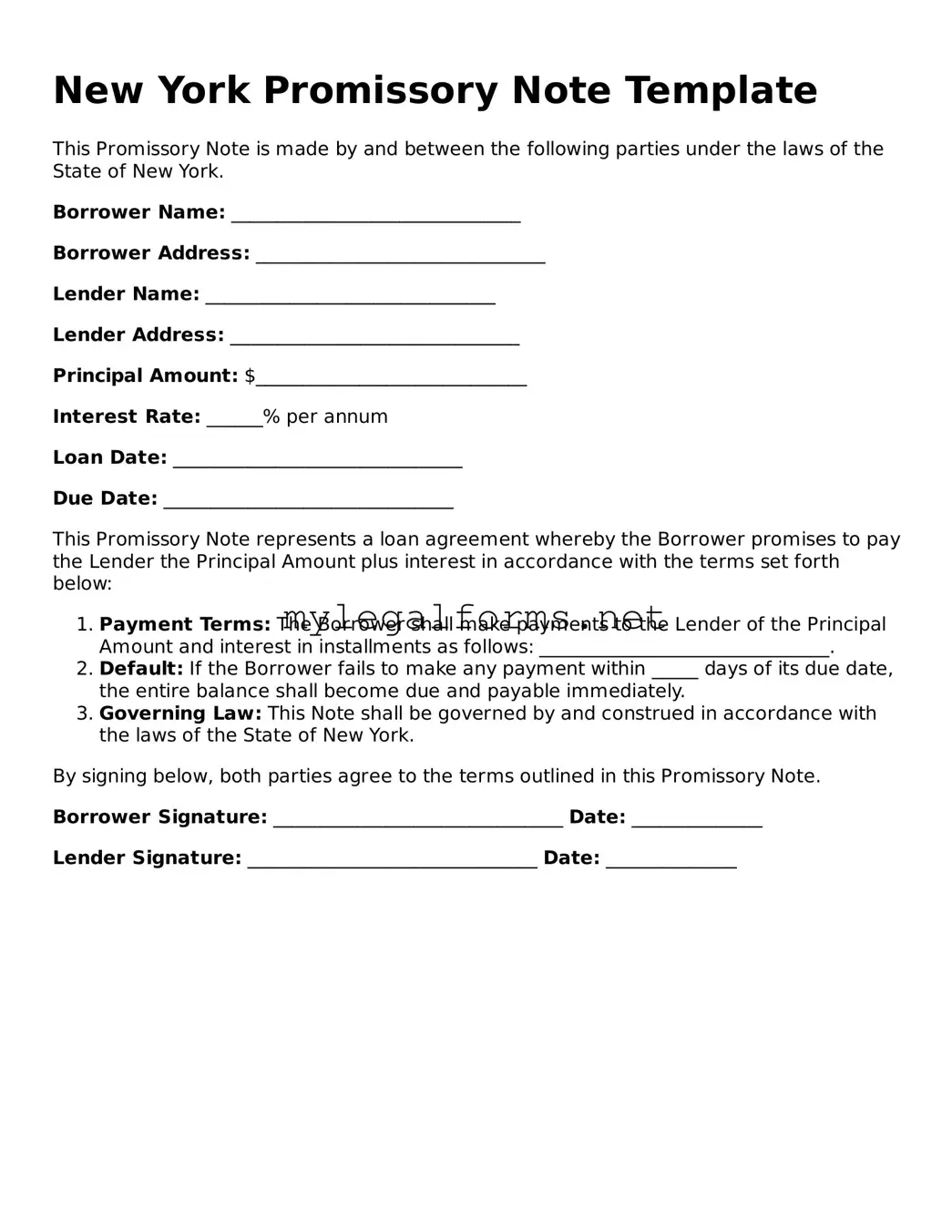New York Promissory Note Template
This Promissory Note is made by and between the following parties under the laws of the State of New York.
Borrower Name: _______________________________
Borrower Address: _______________________________
Lender Name: _______________________________
Lender Address: _______________________________
Principal Amount: $_____________________________
Interest Rate: ______% per annum
Loan Date: _______________________________
Due Date: _______________________________
This Promissory Note represents a loan agreement whereby the Borrower promises to pay the Lender the Principal Amount plus interest in accordance with the terms set forth below:
- Payment Terms: The Borrower shall make payments to the Lender of the Principal Amount and interest in installments as follows: _______________________________.
- Default: If the Borrower fails to make any payment within _____ days of its due date, the entire balance shall become due and payable immediately.
- Governing Law: This Note shall be governed by and construed in accordance with the laws of the State of New York.
By signing below, both parties agree to the terms outlined in this Promissory Note.
Borrower Signature: _______________________________ Date: ______________
Lender Signature: _______________________________ Date: ______________
